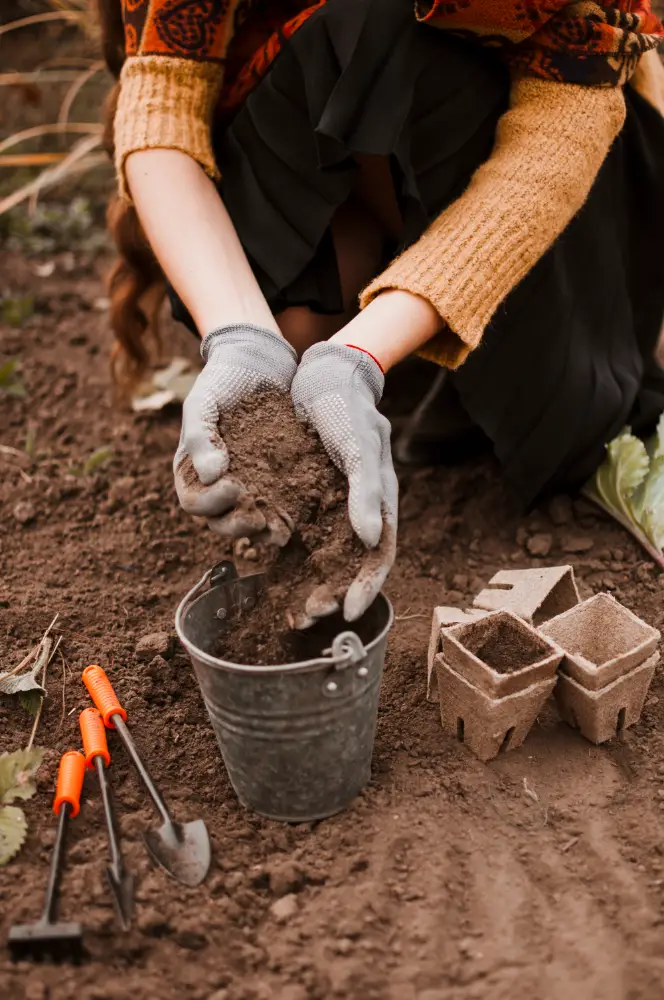Cultivating Your Dream Garden* Planning for Success: Before starting your garden, it’s essential to plan out the layout, types of plants, and any structures you may need. This initial step will set the foundation for a successful garden.
- Choosing the Right Plants: Selecting plants that are well-suited to your climate and soil type can make a big difference in how well they thrive. Consider factors like sunlight, water requirements, and mature size when choosing plants.
- Maintenance is Key: Regular watering, weeding, and pruning are essential to keep your garden looking its best. Be prepared to invest time and effort into maintaining your garden to ensure it flourishes.
By following these steps and staying dedicated to your garden, you can create a beautiful and thriving outdoor space that reflects your vision and creativity.
Understanding Your Garden Vision
Visualize Your Garden: Before starting your garden, it’s crucial to have a clear vision of what you want to achieve. This can help you plan the layout, choose the right plants, and create a cohesive design.
Identifying Your Garden Goals
Identifying your garden goals is essential for a successful and fulfilling gardening experience. Whether you aim to create a peaceful retreat, grow your own food, or attract wildlife, having clear objectives will guide your plant selection and garden design. By defining your goals, you can tailor your gardening practices to achieve the desired outcomes and ensure that your garden reflects your vision.
Sketching Out Your Ideal Garden Layout
Planning Your Ideal Garden Layout: The key to a successful garden layout is to consider the different functions you want your garden to serve. This could include areas for relaxing, entertaining, or growing vegetables. By sketching out a plan, you can visualize how each area will flow together and ensure that your garden meets all your needs.
Choosing Your Garden Theme or Style
When selecting a garden theme or style, consider your personal preferences and the overall aesthetic you want to create. Whether you prefer a formal, structured garden with clean lines and geometric shapes or a more relaxed, cottage-style garden with an abundance of colorful flowers and whimsical decorations, your garden theme should reflect your personality and create a space that brings you joy and relaxation. Think about the maintenance level you are comfortable with and how much time you can dedicate to tending to your garden, as different themes may require varying levels of care and attention.
Planning Your Garden
When planning your garden, consider the sun exposure each area gets. Different plants have varying light requirements, so it’s important to group them accordingly. Also, think about the layout to optimize space efficiently. Proper planning can lead to a beautiful and well-balanced garden throughout the seasons.
Assessing Your Garden Space and Conditions
Sunlight Exposure: Identify areas that receive full sun, partial sun, or shade. This will help you choose plants that thrive in specific light conditions.
- Soil Quality: Assess the type of soil in your garden. Different plants require different soil types, so knowing this will guide your plant selection.
- Water Drainage: Check the drainage in your garden. Some plants prefer well-draining soil, while others thrive in moist conditions.
By understanding these factors, you can create a garden space that caters to the needs of your chosen plants, ensuring a flourishing and vibrant garden.

Selecting the Right Plants for Your Climate and Soil
Choosing the right plants for your climate and soil is crucial for a successful garden. Plants that are native to your region are more likely to thrive as they are already adapted to the local conditions. Understanding the specific needs of the plants in terms of sunlight, water, and soil type will help ensure they grow healthy and strong. It’s important to research and select plants that are well-suited to your area to create a vibrant and flourishing garden.
Creating a Garden Timeline
Creating a Garden Timeline can be a helpful way to plan your gardening activities efficiently. Start by listing key tasks like planting, watering, and pruning. Assign each task to a specific month based on your local climate and plant requirements. Breaking down your gardening tasks into a timeline can ensure that you stay on track and maximize the health and growth of your garden throughout the year.
Designing Your Garden
Designing your garden involves choosing the right plants, layout, and features. Consider the amount of sunlight, soil quality, and space available. Incorporate a mix of colors, textures, and heights for visual interest. Add focal points like a fountain or sculpture for a unique touch. Make sure to include pathways for easy access and maintenance.

Creating Focal Points and Pathways
Focal Points: Strategically placing focal points in a room can draw attention and create visual interest. These can be achieved using artwork, unique furniture pieces, or accent walls.
Pathways: Clear pathways in a space are crucial for efficient movement and a sense of flow. Using furniture placement and rugs can help define pathways and guide people through a room.
Incorporating Elements of Color and Texture
Adding elements of color and texture to a room can completely transform its look and feel. A pop of vibrant color can bring energy and personality, while varied textures create depth and visual interest. Mixing different textures like soft fabrics, sleek metals, and rough wood can add dimension to a space, making it more visually appealing and inviting to the senses.
Balancing Hardscape and Softscape
Harmonious Aesthetic: Balancing hardscape with softscape in your outdoor space can create a visually pleasing environment. The contrast between the solid elements of hardscape, like stone walkways or wooden decks, and the organic softscape of lush greenery and colorful flowers, adds depth and texture to the overall design.
Implementing Your Garden Design
Start with a Plan: Before digging in, have a clear design in mind. Consider factors like sunlight, soil type, and space constraints.
- Choose the Right Plants: Select plants that thrive in your specific conditions. This will ensure a successful and low-maintenance garden.
- Maintain Consistency: Stick to your design plan throughout the implementation process. Consistency will help create a cohesive and visually appealing garden space.
Implementing a well-thought-out garden design can lead to a beautiful and harmonious outdoor space that you can enjoy for years to come.
Preparing the Soil and Planting
Soil Preparation: Before planting, it’s important to loosen the soil to allow roots to grow easily. Adding compost or organic matter can improve soil fertility.
Planting: Dig a hole slightly larger than the plant’s root ball. Gently place the plant in the hole, cover with soil, and water thoroughly. Proper spacing between plants is crucial for healthy growth.
Caring for Your Garden: Watering, Feeding, and Pruning
Watering: Regular watering keeps plants healthy and vibrant. It’s crucial for root development and overall growth.
- Feeding: Providing the right nutrients through fertilizers is essential for strong and blooming plants. This helps boost their health and resilience.
- Pruning: Trimming dead or overgrown branches helps plants maintain shape and promotes new growth. It also prevents diseases and encourages flowering.
These basic practices are key to ensuring your garden thrives and flourishes throughout the seasons.

Dealing with Garden Pests and Diseases
- Natural Remedies: Utilizing natural remedies like neem oil or garlic spray can effectively deter pests without harmful chemicals.
- Crop Rotation: Rotating crops annually helps prevent disease buildup in the soil and reduces the likelihood of pests returning.
- Companion Planting: Planting certain herbs and flowers alongside vegetables can help repel pests naturally, creating a more balanced ecosystem in your garden.
Enjoying the Fruits of Your Labor
Appreciating Your Efforts: Enjoying the fruits of your labor can bring a sense of accomplishment and satisfaction. Taking a moment to admire what you have achieved can boost your motivation and inspire you to keep working towards your goals.
Maintaining Your Garden Throughout the Seasons
Year-Round Maintenance: Keeping up with your garden throughout the seasons is essential for its health. Regular weeding and mulching help to control unwanted growth and maintain soil moisture levels. Pruning plants in the spring and fall can promote healthy growth and flowering. Consider planting a variety of seasonal flowers to keep your garden vibrant and colorful all year long.
Harvesting and Preserving Your Garden Produce
Harvesting at Peak Ripeness: Harvesting fruits and vegetables at their peak ripeness ensures the best flavor and nutritional content.
Proper Storage Techniques: Using appropriate storage methods like canning, freezing, or drying helps preserve the produce’s freshness and flavor for longer periods.
Reducing Food Waste: By harvesting and preserving your garden produce, you can reduce food waste and enjoy your home-grown fruits and vegetables throughout the year.
Sharing Your Garden with Friends and Family
Garden Gathering: Sharing your garden with friends and family can create wonderful memories. It’s a great way to bond over nature and enjoy fresh produce together.




One Comment